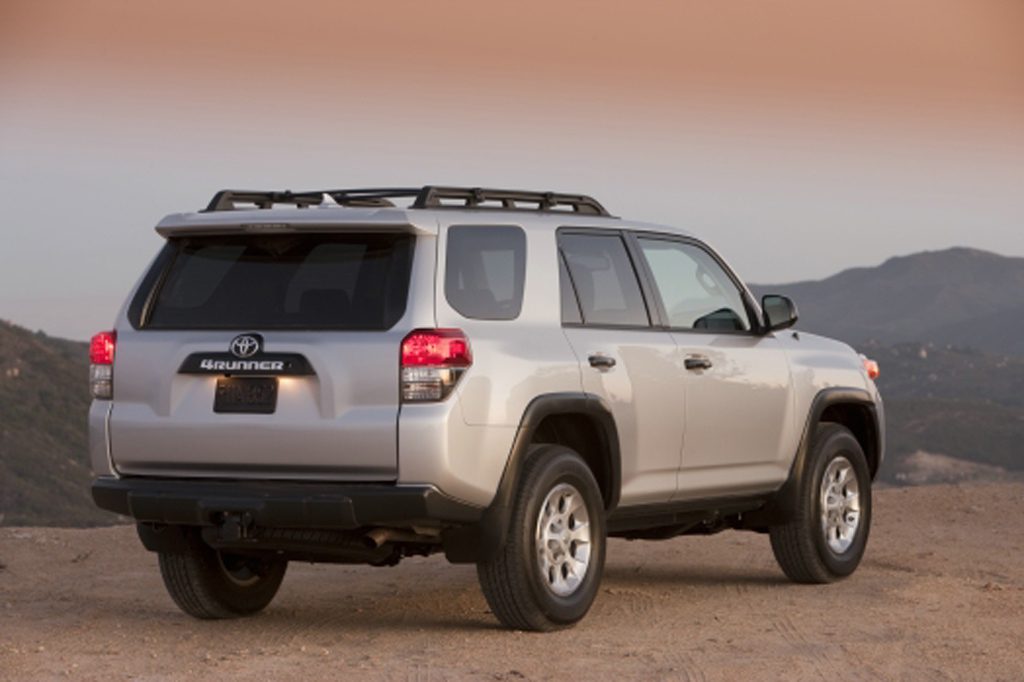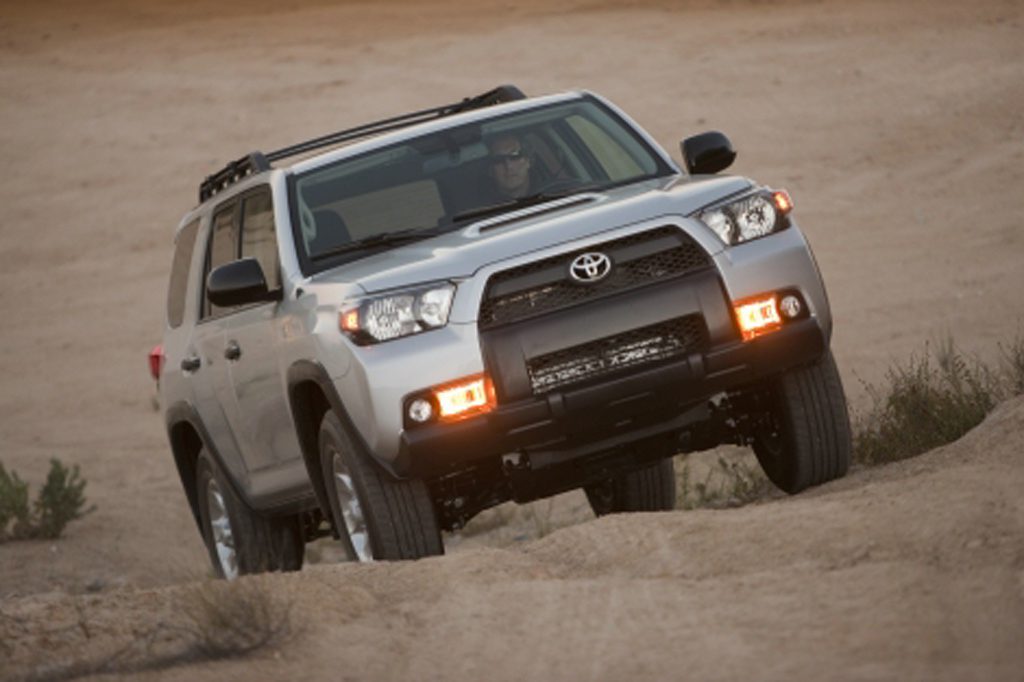| Midsize SUV; Built in Japan |
|
|
| Good condition price range: $12,300 – $36,000* |

2010 Toyota 4Runner front

2010 Toyota 4Runner rear

2010 Toyota 4Runner profile

2010 Toyota 4Runner
| Pros: |
|
| Cons: |
|
This latest iteration of Toyota’s traditional truck-type SUV doesn’t make much sense as an on-road vehicle because it handles clumsily, wallows on the highway, and is difficult to get in and out of. The 2014 models did receive enough meaningful improvements to make 4Runner a more livable daily driver though. Despite its body-on-frame design, a 4Runner doesn’t make much sense as a workhorse because of its unimpressive 5,000-pound maximum towing capacity. The 4Runner works as an off-road SUV, albeit one that carries a stiff price tag compared to Nissan’s similar-purpose Xterra. Toyota loyalists with true wanderlust, but who think the company’s Land Cruiser is too expensive, will find enough to like here. Everyone else would be better served shopping elsewhere.
Overview
The redesign of the Toyota 4Runner for 2010 gave it freshened styling, more V6 power, and a new four-cylinder engine. This midsize SUV used traditional truck-type construction. 4Runners came in three trim levels: Base SR5, off-road-ready Trail, and top-line Limited. Rear-wheel drive was standard on the SR5 and Limited. Two four-wheel-drive systems were offered. Available on SR5 and standard on Trail was a part-time setup that should not be left engaged on dry pavement. Limited versions had a full-time setup that could be left engaged. Both included low-range gearing for off-road use. Trail models had additional 4WD hardware, including Toyota’s Crawl Control (CRAWL), which was designed to regulate speed in severe off-road conditions. Also included was Toyota’s Multi-Terrain Select system, which allowed drivers to adjust the 4WD hardware to suit different off-road terrain. Rear-drive 4Runner SR5 models had a 157-horsepower 2.7-liter four-cylinder engine borrowed from Toyota’s Tacoma compact pickup truck. It paired with a four-speed automatic transmission. Optional on that model and standard on all other versions was a 270-horsepower 4.0-liter V6–an increase of 34 horsepower over the 2009 4Runner V6. That engine teamed with a five-speed automatic. A V8 was no longer available. Maximum towing capacity was 2,000 pounds for the four-cylinder and 5,000 pounds for the V6. Standard safety features included antilock braking, traction control, an antiskid system, curtain-side airbags with rollover deployment, front-side airbags, and front knee airbags. Standard seating was for five passengers, and an optional third-row bench increased capacity to seven. Leather upholstery was standard on the Limited and optional on the SR5. Also standard on the Limited were dual-zone automatic climate control and keyless entry/engine start. Competitors included the Ford Explorer, Honda Pilot, Jeep Grand Cherokee, and Nissan Xterra.
Yearly Updates
| 2011 4Runner The four-cylinder engine was discontinued after 2010, making all versions V6-powered. Otherwise, the 2011 Toyota 4Runner saw only minor trim changes. |
| 2012 4Runner Newly available on the 2012 Toyota 4Runner were power running boards and Toyota’s Entune infotainment system, but there were no other changes of note. |
| 2013 4Runner There were few changes for the 2013 4Runner, but the top-line Limited trim level gained a standard navigation system. |
| 2014 4Runner For 2014, Toyota gave the 4Runner a fairly substantial freshening. While the basic platform and drivetrain were unchanged, the vehicle received revised exterior styling and an updated interior with new connectivity and infotainment features. |
| 2015 4Runner Toyota’s long-running midsize SUV got an off-road-ready TRD Pro Series model for 2015. |
